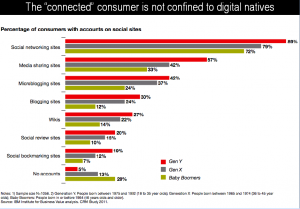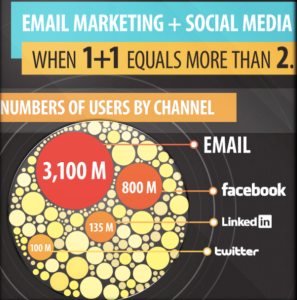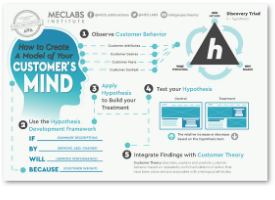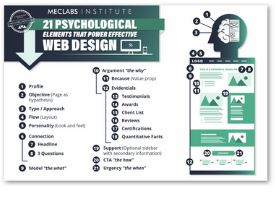Email Summit: Integrating mobile, social and email marketing channels
The MarketingSherpa Email Summit 2012 audience was treated to Brian Solis, author of The End of Business as Usual: Rewire the way you work to succeed in the customer revolution.
He opened with the idea that the real marketing challenge is the culture of the organization, and he provided a phrase he uses to describe this:
“Digital Darwinism is the evolution of consumer behavior when society and technology evolve faster than your ability to adapt.”
Another big idea he offered was “social media is the new normal.” He continued that, “Social media is different than other media channels before it. Here, it’s about relationships, recognition, engagement, value and help.”
As you might guess from this set-up, the intro of Brian’s talk focused on social media and the mobile experience, and he offered many data points, such as:
- More than 350 million Facebook users access the platform via mobile devices
- Daily mobile social networking grew 58% in 2011
- Accessing social platforms via mobile browser is up 25%
- Accessing social platforms via mobile apps is up 126%
And given these numbers, Brian offered a chart that illustrates that the “connected consumer” isn’t limited to a certain age group:
Brian said, “My mother uses Facebook more than I could ever hope to use it. I may have to opt out of her feed.”
The mobile and social introduction led into the main theme of the keynote: integrating all the channels including social, mobile and email.
He presented this slide to the audience:
Integrating the channels
Brian then pointed out that email marketing and social media are the top beneficiaries of 2012 marketing budgets, which points where practitioners are focusing.
Social and mobile have the high-growth numbers, but by no means are they taking away from email. Instead, the idea is to integrate marketing channels. Social and mobile should work with email marketing to improve overall marketing efforts.
In fact, Brian offered a few more data points:
- 70% of business executives plan to integrate social media marketing efforts with email in 2012
- 44% plan to integrate mobile within email campaigns
- Social sharing boosts email marketing engagement 115%
Digital marketing should be about making connections through all these different touch points, and all three channels should work together to connect with your customer or prospect in different ways. Brian described the world we now live in as an “egosystem,” where we expect real-time experiences, including marketing, to work in our favor.
“This is the end of the destination Web. Taking people from an interactive egosystem to a static dead-end equals fail,” says Brian.
To conclude the keynote address, Brian provided eight points to create an integrated digital marketing strategy.
The future of integrated media comes down to:
- Making email matter again
- Establishing a connect-worthy and shareable presence
- Rewarding consumers for their connection
- Reinforcing value
- Defining and integrating experiences
- Meaningful engagement
- Content creation (Keep it significant and sharable — K.I.S.S.)
- Intelligence + Personalization: Listening > Learning > Segmenting
Related Resources:
Email Summit: Mobile marketing panel on the complex sale
Mobile Email Marketing: 5 tactics to engage and convert smartphone users
Social Email Marketing: How to encourage sharing wisely, not randomly
Interactive Email: 6 tactics to leverage the influence of social reinforcement
Categories: Email Marketing channel integration, Email Marketing, Email Summit 2012, mobile marketing, social media












Great Article. Would have enjoyed seeing the whole presentation. Of course, the question we all have to answer now is how to do this. Tools, Techniques, and Testing? How does this post engage this audience? Here at the comment section or somewhere else?
I’m reminded of a BLOG post I read nearly 1 year ago: http://priorityresults.com/blog/does-the-emergence-of-social-media-mean-the-end-of-email/. It’s from a world-class marketing professional who obviously knows what he’s talking about. 😉
But seriously, I couldn’t agree more. Email, social media, and mobile marketing are all here to stay. Although we’re going to hear about mobile, mobile, mobile, this year, it’s still only one component of an integrated marketing strategy.
Suggestion: Just like we did with social media; listen and learn before you jump in. Otherwise, you may end up throwing away $, time, resources, and business, just to stay current with the trends. Take your time and invest appropriately based on where your target market is. Good luck!
Sean and Jon, thanks for the comments.
Sean — it would be great to get some audience engagement here in the comments. I bet we could draw in some great insight.
Jon — as far as budgeting goes, Loren McDonald, albeit speaking specifically about social media channels, told me that a great idea is to just carve out a part of the budget for the channel (email, social, mobile, etc.) and not for specific campaigns.
The reasoning is there are so many new things happening, you want to have the money to jump in if it fits your overall strategy.
For example, did you plan for Pinterest pinning in your last budget? Probably not. But depending on your target audience, Pinterest might be the key element that makes, or breaks, your latest campaign.
Thanks for sharing this David – it’s a very interesting read.
I’m integrating my social media efforts and email. Since it’s not possible to sell within Facebook, I generate leads from there and whilst I’m still engaging within Facebook I’m marketing to my leads via email. Social media is about relationship marketing but it has to yield a tangible ROI otherwise what’s the point. This approach has been working pretty well for my business.
Thanks
Nicky
David
Digital Darwinism is so true. In this interactive world effecive customer engagement will be a hallmark of market leaders. They understand that engaging with customers in progressively more innovative, repsonsive way is what it takes to earn their loyalty. Companies should look to engage with customers on their terms and dynamically respond as their needs change.Often however enterprises have their data built up into silos and it is difficult for them to adapt and “evolve”. Next generation messaging systems will cater for this issue by connecting these sources and deliver irrespective of required channel, without major infrastructure change. So this will help the organisations adapt at a quicker pace and have the foundation for future change.
Thanks, Gary